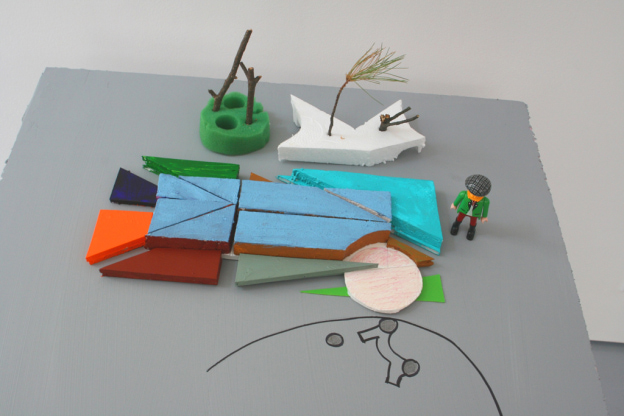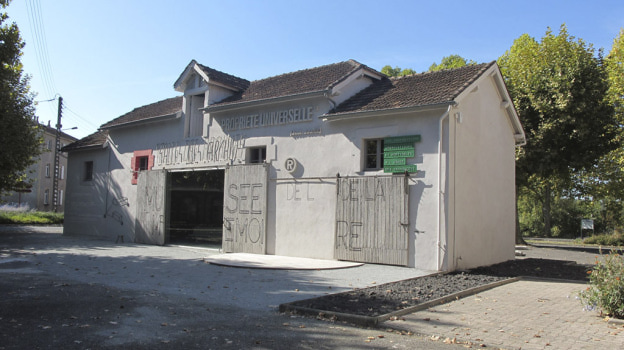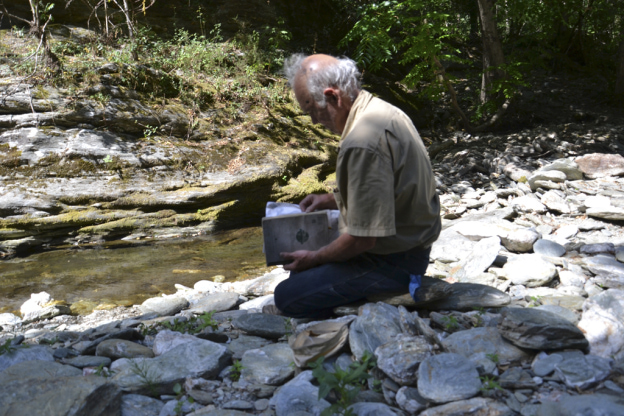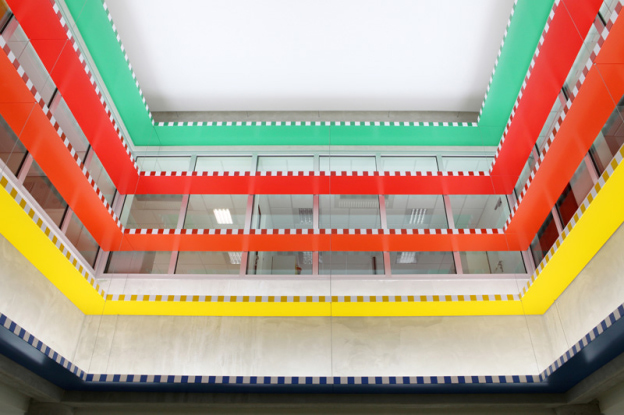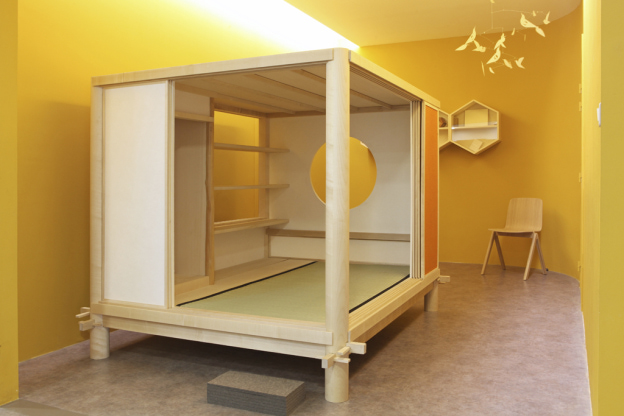Los Pès del parpalhòl (The butterfly’s feet)
At the request of the associative school Calandreta Còsta Pavada (Occitan-French bilingual school), Jessica Stockholder created a practical work, a play and living space.
In 2007, in association with the teachers and activity leaders, the parents of pupils commissioned a work for the school yard to promote sensory experiences, meeting and exchange for children between three and ten years old. The sculpture should be capable of embodying some of the school’s founding ideas: a spirit of tolerance, curiosity, openness to foreign languages and cultures.
Jessica Stockholder’s proposal comprises a “workable” sculpture made in bright colours and varied materials: marble, wood, Corian, concrete and brick. It is composed of a set of geometric forms of low height that unfold and are organised around a central point covered by a rectangular structure in plasticized sheet metal. This structure can act as a space for play/ self-staging, and shows volume and passage. The floor drawing in aluminium near the red marble disc, as well as the shape of the larch planter, take elements from the Occitan cross. “The Occitan cross is quite abstract in the work,” writes Stockholder. “I’m responding to the fact that it wasn’t present anywhere in the school when I visited it (…).”
The Calandreta Còsta Pavada school could not finally accommodate the work. It was agreed to donate it to the town of Toulouse and to install it in the Musée des Abattoirs hemicyle, near the educational workshops/ studios.
dossier de presse, avril 2013 – pdf
commanditaire : association Calandreta Còsta Pavada, Toulouse
Soutien : Fondation de France / Nouveaux commanditaires, ministère de la Culture et de la Communication (DGCA, DRAC Midi-Pyrénées), Ville de Toulouse,
Patron: Calandreta Còsta Pavada association, Toulouse
Funding: Fondation de France / New Patrons, Minister of Culture and Communnication (DGCA, DRAC Midi-Pyrénées), the town of Toulouse, Syndicat mixte des Abattoirs
2013
crédits photographiques Jessica Stockholder (toutes) sauf Jean-François Peiré–Drac Midi-Pyrénées (9)
